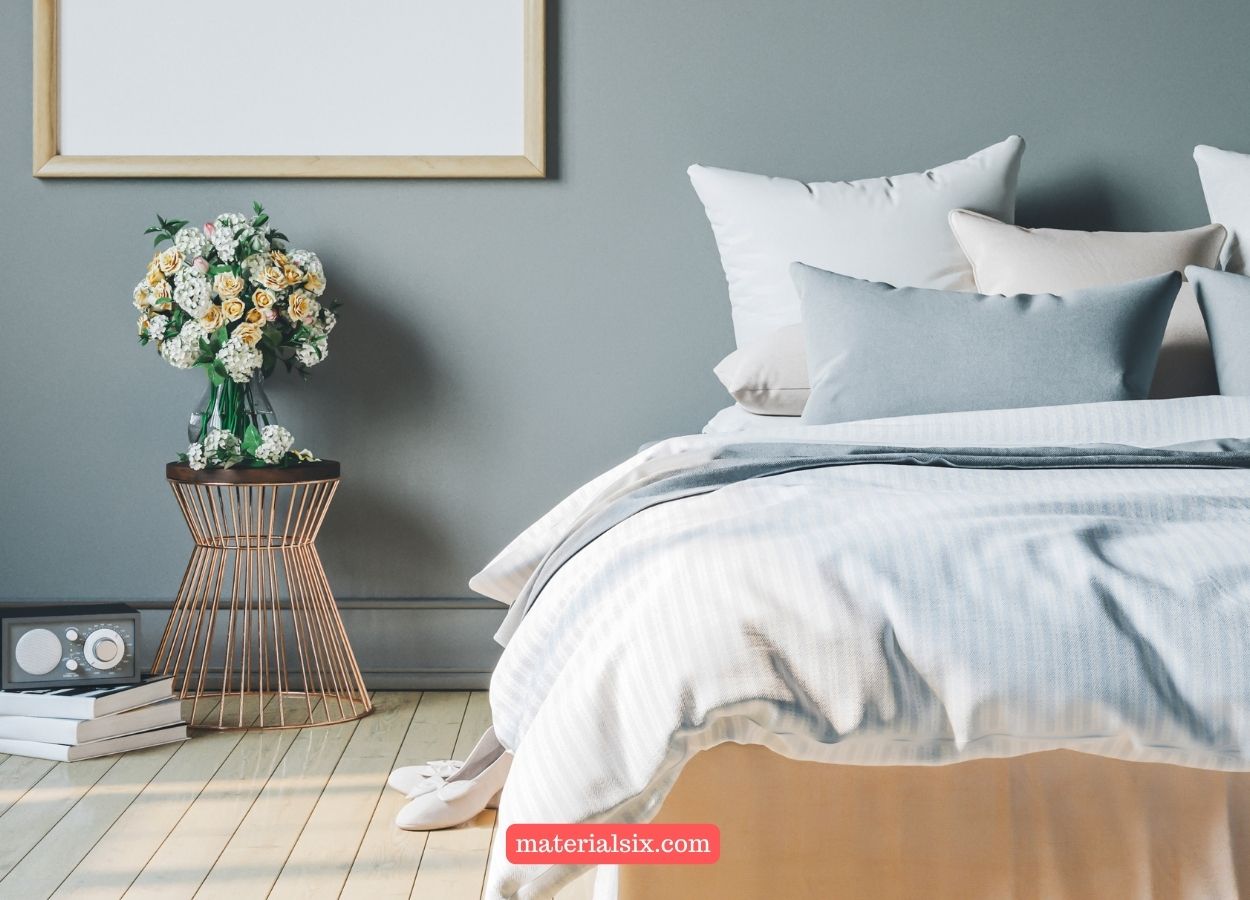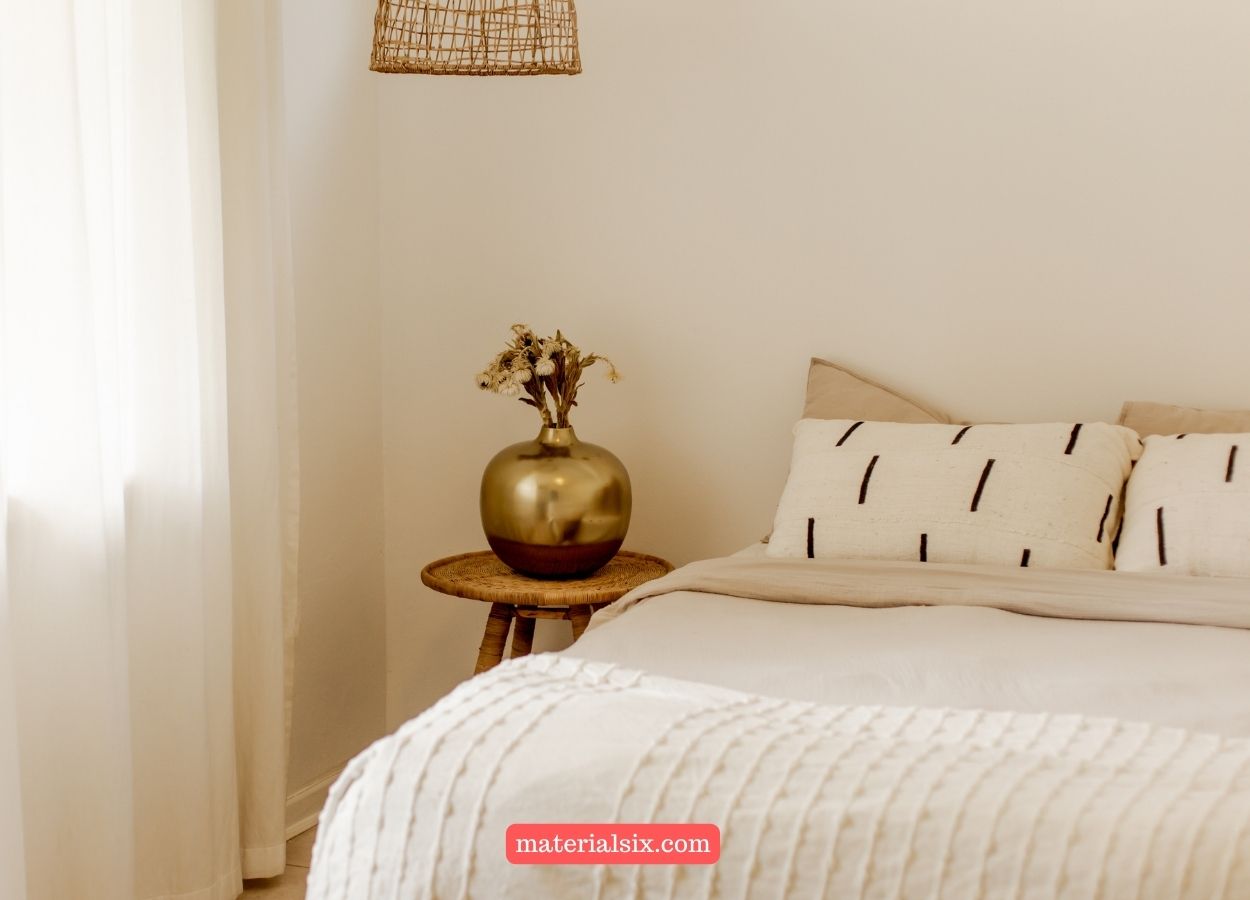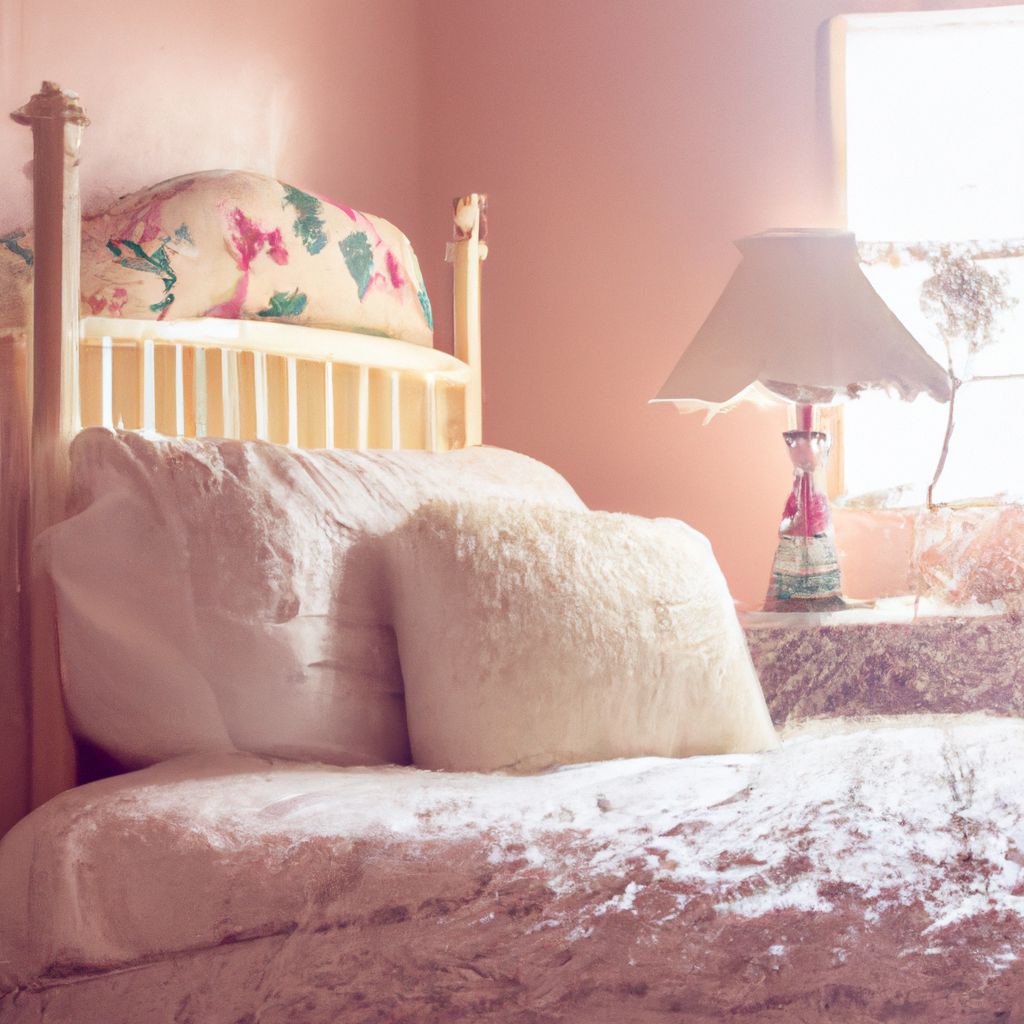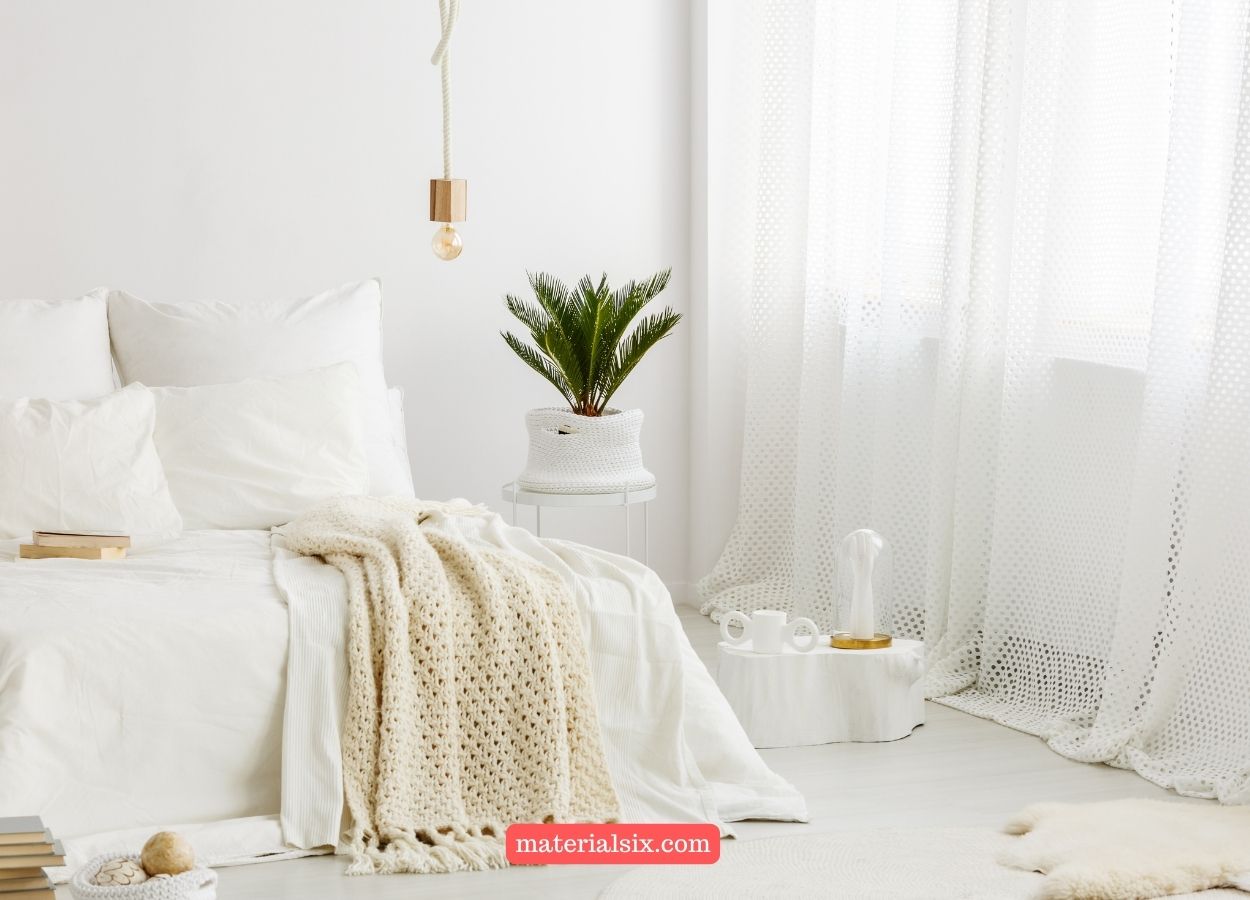Feeling tired but just can’t catch those elusive Z’s? It’s not just you, it’s your bedroom! More than just a room with a bed, the perfect bedroom is your personal sanctuary – a place that cocoons you in comfort and serenity, and preps your body for a restful night’s sleep.
Our upcoming guide, “How to Create a Cozy Bedroom for Better Sleep,” is jam-packed with practical tips and enlightening insights to help you transform your ordinary bedroom into a restful paradise. We’ll cover everything from the ideal room temperature, the magic of soft lighting, the tranquil tones for your walls, to the softest of linens that will make you feel like you’re sleeping on a cloud.
So, are you ready to dive in and discover the secrets to a sleep-friendly sanctuary? Buckle up! Your journey towards dreamland is about to get seriously cozy, and you’ll wake up each morning feeling refreshed and ready to conquer the day. Join us, and let’s create the coziest, dreamiest bedroom together!

Creating a Cozy Bedroom
To create a cozy bedroom for better sleep, start by addressing key elements. Choose the right bedding, select the perfect mattress, incorporate soft lighting, add warm colors and textures, and enhance the atmosphere with aromatherapy. Each sub-section offers a solution to transform your bedroom into a haven of comfort and tranquility.
1. Choosing the Right Bedding
Creating a cozy bedroom starts with selecting the right bedding. Here are some key points to consider:
- Material: Choose high-quality, breathable fabrics like cotton or linen for optimum comfort.
- Thread count: Higher thread count means better quality and durability.
- Color coordination: Pick bedding that suits your bedroom’s color scheme for a harmonious look.
- Pillow perfection: Get pillows with the perfect support for your sleeping style.
- Seasonal considerations: Use different bedding sets for summer and winter.
- Maintenance: Go for bedding that is easy to clean and maintain.
To make your bedroom even more inviting, look for decorative edges and embroidered patterns on pillowcases. Picture yourself sinking into luxurious sheets after a long day or enjoying a lazy weekend morning in softness. Make your dream retreat a reality by choosing the perfect bedding today!
2. Selecting the Perfect Mattress
Choosing a mattress? A few things to consider:
- Firmness to suit your sleep needs.
- A balance of support & comfort.
- Body type & special needs, such as back pain or allergies.
- Size – fits in your bedroom, enough room to move.
- Durability and quality materials.
- Invest in quality for years of good rest.
Unique details:
- Different mattresses offer different benefits.
- Memory foam for contouring & pressure relief.
- Innerspring for bounce & airflow.
- Hybrid for support and comfort.
- Consider motion transfer if you share the bed.
- Some mattresses absorb movement, reducing disturbances.
Pro Tip:
Take advantage of trial periods and money-back guarantees. Test it in your own home – a few nights to decide if it suits your needs.
3. Incorporating Soft Lighting
Soft lighting is key for coziness in the bedroom. It brings warmth, enhances atmosphere, and creates a calming feeling. Here are some creative ideas to use it:
- Fairy lights on walls or draped around the bed bring a magical effect.
- Dimmable lights let you adjust the brightness according to your mood.
- Table lamps with diffused shades give practical lighting, plus a touch of elegance.
- Candles around the room make a warm and intimate ambiance. Scented ones add relaxation.
For an even more enchanting vibe, try color-changing LED lights or wall sconces with adjustable angles. Pro Tip: Put string lights behind sheer curtains for a dreamy glow that turns your bedroom into a cozy sanctuary.
4. Adding Warm Colors and Textures
For a cozy bedroom, try warm paint colors like taupe or terracotta. Textiles with rich textures like fluffy blankets or chunky knit pillows add luxury. Incorporate natural elements like wood furniture or woven baskets for warmth and depth. Soft lighting fixtures with a warm glow promote restful sleep. Transform your bedroom into a haven of comfort and relaxation by exploring different color palettes and texture combinations today!
5. Enhancing the Atmosphere with Aromatherapy
Aromatherapy is an excellent way to enhance the atmosphere of your bedroom, by incorporating scents that promote relaxation. These fragrances can reduce stress, improve sleep quality, and increase well-being.
Essential oils, like lavender, chamomile, or jasmine, are ideal for creating a calming environment. Their gentle aromas are known to induce tranquility and decrease anxiety.
Diffusers add a stylish touch to your bedroom decor, while dispersing the scent throughout the room. This ensures you can fully experience the benefits of aromatherapy.
Aromatherapy has been around for centuries. Ancient Egyptians extracted essential oils from plants, for religious ceremonies and healing. This ancient wisdom formed the basis for modern-day aromatherapy practices.
Enhancing Comfort

To enhance comfort in your cozy bedroom for better sleep, integrate solutions like installing blackout curtains, using soundproofing techniques, investing in a comfortable chair or seating area, incorporating relaxing sounds or white noise, and utilizing cozy rugs or carpets. Each sub-section tackles a specific aspect, bringing you closer to creating the perfect sleep sanctuary.
6. Installing Blackout Curtains
Blackout curtains are great for comfort and privacy at home. Here’s a step-by-step guide on how to install them.
- Measure Window: Measure the width and height of the window to get the right size curtains.
- Pick Curtain Rod: Choose a sturdy rod that extends beyond the frame to prevent light leakage.
- Mount the Rod: Use a drill and hardware to mount the rod above the window. Make sure it’s level.
- Hang the Curtains: Slide the curtains onto the rod, covering the entire window. Adjust them if needed.
- Secure with Clips or Rings: If desired, secure the curtains with clips or rings. This will let you open and close them easily.
- Test for Light Leakage: Turn off all lights in the room and check for any light leakage. Make adjustments for optimal darkness.
Plus, blackout curtains block out external noise, maintain room temperature, and help save energy.
Fun Fact – According to The National Sleep Foundation, blackout curtains can help improve sleep by creating a dark sleep environment, even during the day.
7. Using Soundproofing Techniques
Soundproofing techniques can increase the comfort of any space. It creates a peaceful environment by lowering noise and blocking sound from entering or leaving. By using these techniques, you can reduce disturbances and create a better atmosphere. Here is a 4-step guide:
- Spot problem areas: Find which areas require soundproofing. Work out if the noise is from outside, next door, or in the same room.
- Cover gaps and cracks: Sound can go through small openings, so it’s important to block any gaps or cracks in walls, ceilings, floors, or windows. Use acoustical sealant or weatherstripping.
- Add sound-absorbing materials: Include materials that can absorb and reduce sound waves such as acoustic panels, curtains, carpets, or rugs. These will reduce echoes and noise reflections.
- Upgrade doors and windows: Doors and windows let in noise. Replace solid-core doors or add seals around them. For windows, use double-glazing or window inserts.
Also remember:
- Place bookshelves on walls to absorb sound.
- Put heavy furniture like sofas and cabinets against noisy walls.
- Use thick or layered fabric curtains for soundproofing.
Using soundproofing has been around for centuries. People used materials like heavy tapestries and thick curtains to lessen noise in homes. Over time, more techniques have been developed to better insulate sound.
8. Investing in a Comfortable Chair or Seating Area
Investing in a comfortable chair yields various benefits. It ensures correct back support, preventing disorders. It reduces pain and discomfort from sitting for long periods. Plus, it improves productivity and relaxation, leading to enhanced well-being. Quality chairs are durable, making them a worthy long-term investment.
Moreover, adjustable height, lumbar support, and armrests boost comfort. Studies have shown that sitting on an uncomfortable chair for an extended time can cause health issues. So, it is vital to prioritize comfort when selecting seating options for better work-life.
9. Incorporating Relaxing Sounds or White Noise
To promote relaxation and a sense of calmness, incorporating calming sounds or white noise is an effective way to enhance comfort. Examples of these soothing auditory elements are:
- Ambient Nature Sounds – like the rustling of leaves or the sound of waves crashing on the shore, can take you to peaceful natural surroundings and reduce stress.
- Soft Instrumental Music – classical music or soft melodies can reduce heart rate and bring tranquility.
- ASMR – videos with whispering voices, gentle tapping sounds, or light brushes against objects can trigger a tingling sensation in the brain.
- White Noise Machines – they produce a consistent sound that masks other noises and creates a steady background hum, blocking out distractions.
- Binaural Beats – two slightly different frequencies in each ear influence brainwaves, aiding relaxation, focus, or sleep.
Not only can they enhance comfort, but also improve sleep quality, reduce insomnia symptoms, and increase overall well-being. The Journal of Sleep Research found that individuals who slept with white noise machines had more deep sleep than those without.
10. Utilizing Cozy Rugs or Carpets
Rugs have been a part of home decor since ancient times. Egyptians first wove them from natural fibers like wool and flax to create warmth and art. Persian rugs, known for their intricate designs and craftsmanship, spread across regions. In the 17th century, Europeans brought back fine carpets from Eastern countries.
Nowadays, cozy rugs or carpets continue to be treasured. They add a warm and inviting atmosphere plus extra insulation. A wide range of colors, patterns, and textures are available. They reduce noise, provide cushioning, and offer more traction than hard floors. Plus, they can be easily moved around. Cleaning and maintenance are key for a long life.
Organizing and Decluttering

To create a cozy bedroom for better sleep, organize and declutter with adequate storage solutions, a clutter-free zone, optimized furniture arrangement, smart storage solutions, and clean, clear surfaces.
11. Creating Adequate Storage Solutions
Storage is essential for tidying up and decluttering. Without it, sorting belongings can be tough. Here are tips to help when making storage solutions:
- Climb up high: Maximize wall space with shelves or pegboards. This lets you store items up high, freeing floor space.
- Use closets wisely: Buy closet organizers such as shelves or shoe racks. This helps utilize the space in your closet for organizing and accessing your items.
- Think creatively: Look into ottomans or under-bed containers. These unique solutions help store more while still looking nice.
To make storage better:
- Group: Put similar items together so it’s easier to find them.
- Label: Label boxes, bins, or drawers so you don’t waste time searching.
- Declutter: Get rid of stuff you don’t need or use. This keeps storage space for the important things.
Follow these steps and you can have living spaces that are both functional and attractive. Remember, it’s about finding the right storage solutions for your needs and making use of every bit of space.
12. Implementing a Clutter-Free Zone
- Declutter to start! Get rid of unneeded items or those that don’t bring joy. Donate, sell, or discard responsibly.
- Sort and organize similar things. Use storage like bins and shelves.
- Designate areas for different activities or purposes.
- Set time aside each day/week to tidy.
- Mindfully consider what items come in.
To make the zone even more clutter-free, you can:
- Clear surfaces regularly.
- Make use of vertical space with shelves or hanging organizers.
- Label everything.
- Digitally organize with folders and labeled documents.
This will create a productive, creative, and stress-free environment. Focus on what matters most in life!
13. Rearranging Furniture for Optimal Flow

Reorganizing furniture is key to having the best flow in your living area. By placing furniture in a planned way, you can make a balanced design that both looks great and works well. Here’s a 6-step guide to help you plan your furniture for the best flow:
- Look at your space: Examine the shape and size of your room. Think about architectural features or points of interest that you want to show or hide.
- Identify the purpose: Figure out the main use of the room. Is it a living room to host visitors, a bedroom for resting, or a study for productivity? Knowing the purpose will guide your furniture decisions.
- Clear the mess: Before you move any furniture, take out objects that aren’t needed. This will give you a clearer idea of how to arrange your furniture properly.
- Set up zones: Divide the room into areas based on its purpose. For example, in a living room, you may have spots for conversing, entertainment, and comfort.
- Consider traffic: Arrange the furniture so people can move freely around the room. Make sure there’s enough room between pieces to prevent feeling cramped or blocking pathways.
- Try and adjust: Don’t be scared to try various arrangements until you find one that feels right. Keep tweaking it until you get the best flow and balance in the room.
Remember, arranging furniture is not only about looks, but also improving the usefulness of your area. Also, incorporating multifunctional items like ottomans with secret compartments or modular shelves can further boost both organization and efficiency.
14. Utilizing Smart Storage Solutions
Smart storage solutions are a must for organizing and tidying our living or working spaces. By using these innovative methods, we can maximize the room we have and keep our stuff tidy and accessible.
Vertical space can be used well. Wall shelves and over-the-door organizers can create more space without using much floor room. This is especially helpful in small apartments or offices.
Investing in furniture with built-in compartments is also effective. Beds with drawers underneath and ottomans with storage are both functional and fit in with decor. They provide a place to sit or sleep, and can hide our things.
Using a labeling system can help with smart storage. Labeling containers and shelves makes it easy to find items without searching through multiple boxes. This saves time and avoids frustration.
The idea of using smart storage solutions goes way back. Ancient civilizations carved out hidden compartments in tables and Victorian-era armoires had secret drawers. Now, modern systems incorporate technology and design to meet our needs.
Smart storage solutions can turn cluttered spaces into organized havens. We can make the most of all the nooks and crannies to create a peaceful environment where everything has its place. Let’s get organized, one smart storage solution at a time!
15. Keeping Surfaces Clean and Clear
Maintaining a clutter-free space is essential. To do this, clear surfaces regularly by removing any items that don’t belong. This creates a visually pleasing environment, and allows for easier cleaning and maintenance.
Designate specific areas for different items. Have a spot for keys, wallets, and more. Utilize storage solutions like shelves, hooks, or baskets. Also, get in the habit of putting things away right after use.
Studies show, clearing and organizing your physical environment can improve mental well-being. It reduces visual distractions and stress, while promoting focus and productivity.
Regular cleaning routines also help keep surfaces tidy and protect them from scratches or stains. Use coasters for beverages and placemats for meals.
Sarah experienced this first-hand. She created designated areas and storage solutions. Developed a habit of immediately putting things away. And noticed a transformation in her living space. Her surfaces were consistently clean and clear. Plus, she felt a renewed sense of calmness and order.
Promoting a Relaxing Environment

To create a relaxing environment in your bedroom for better sleep, address distractions and enhance serenity. Minimize electronic distractions, create a calming color scheme, incorporate natural elements, use essential oils for relaxation, and establish a bedtime routine. These sub-sections offer solutions to transform your bedroom into a cozy haven conducive to peaceful slumber.